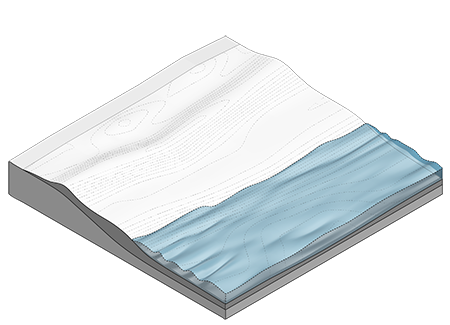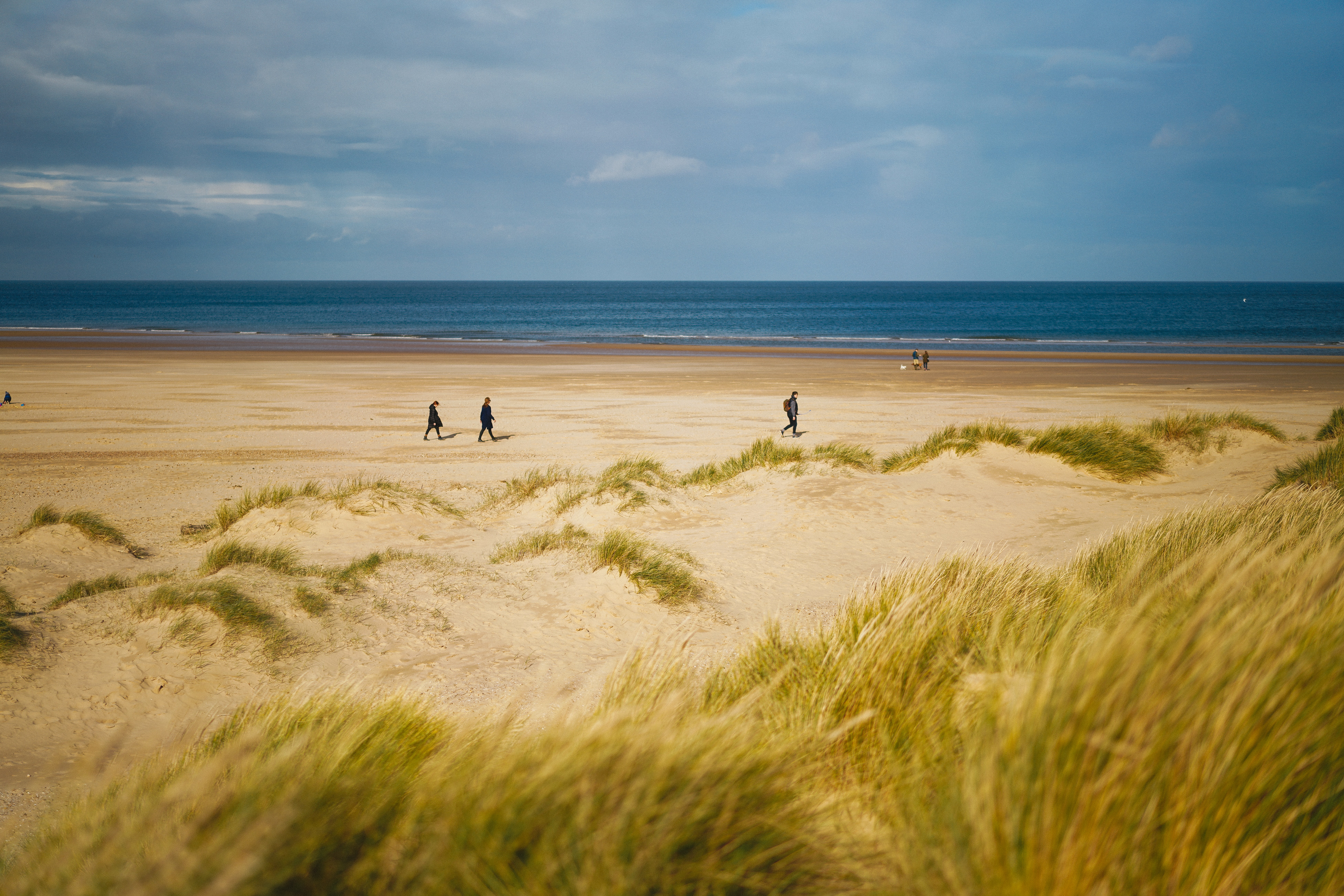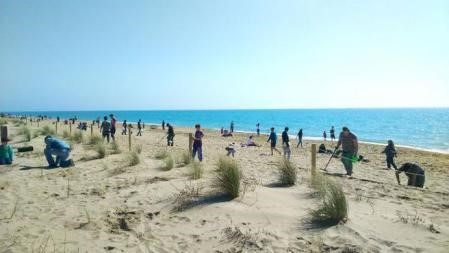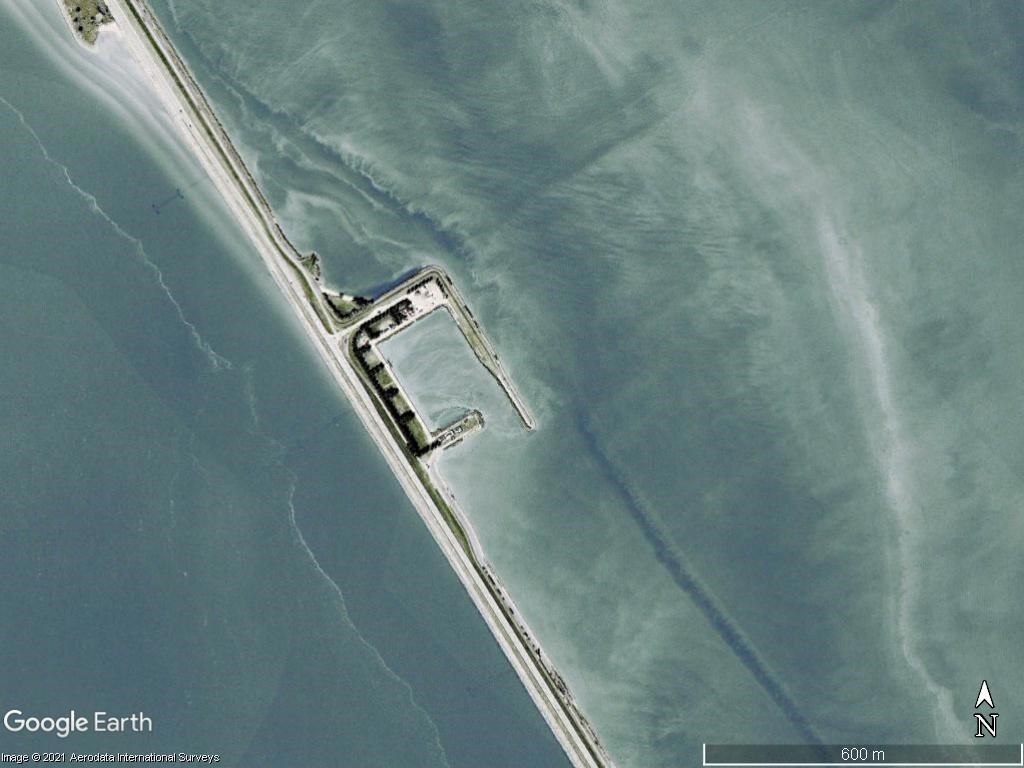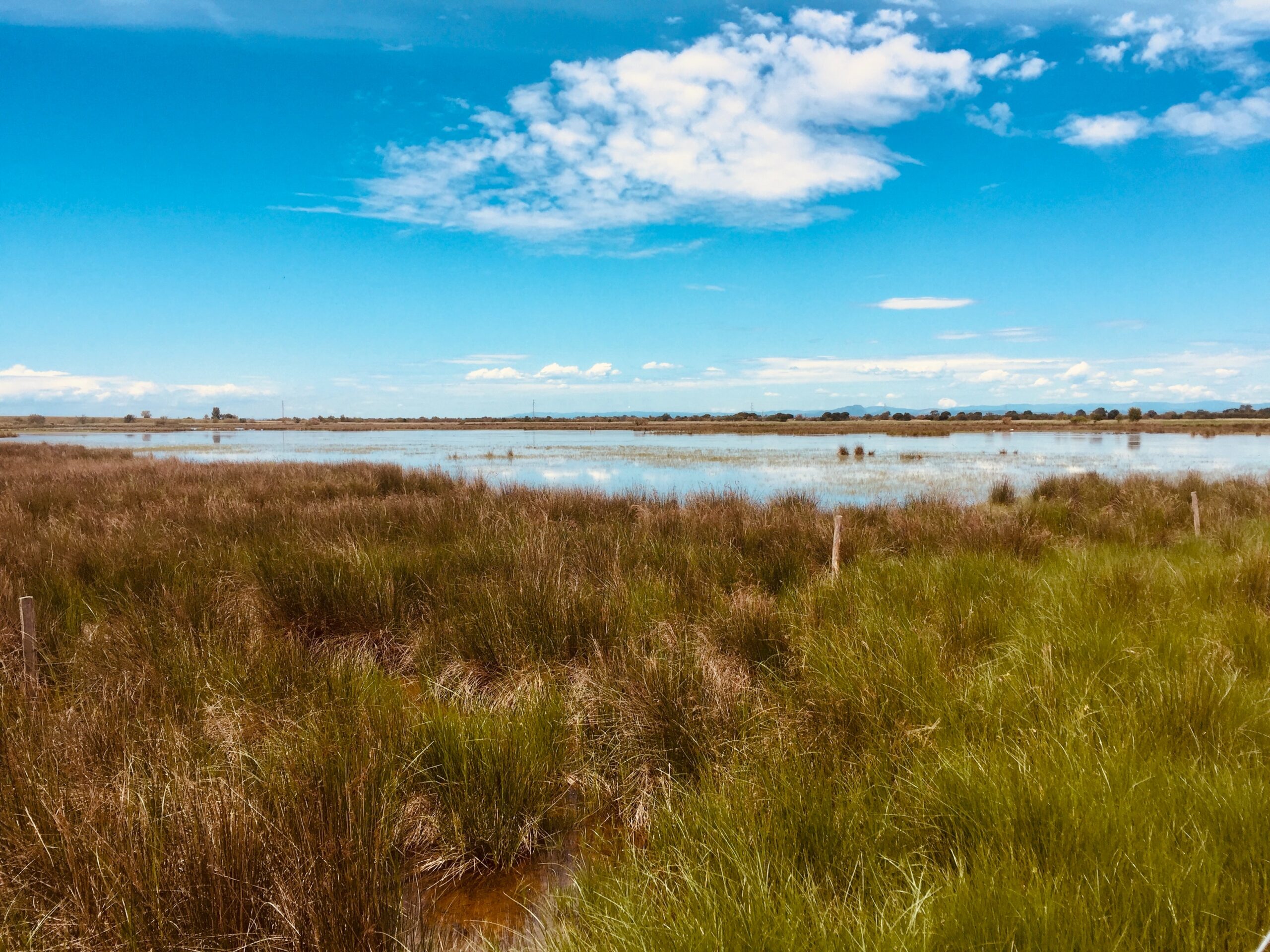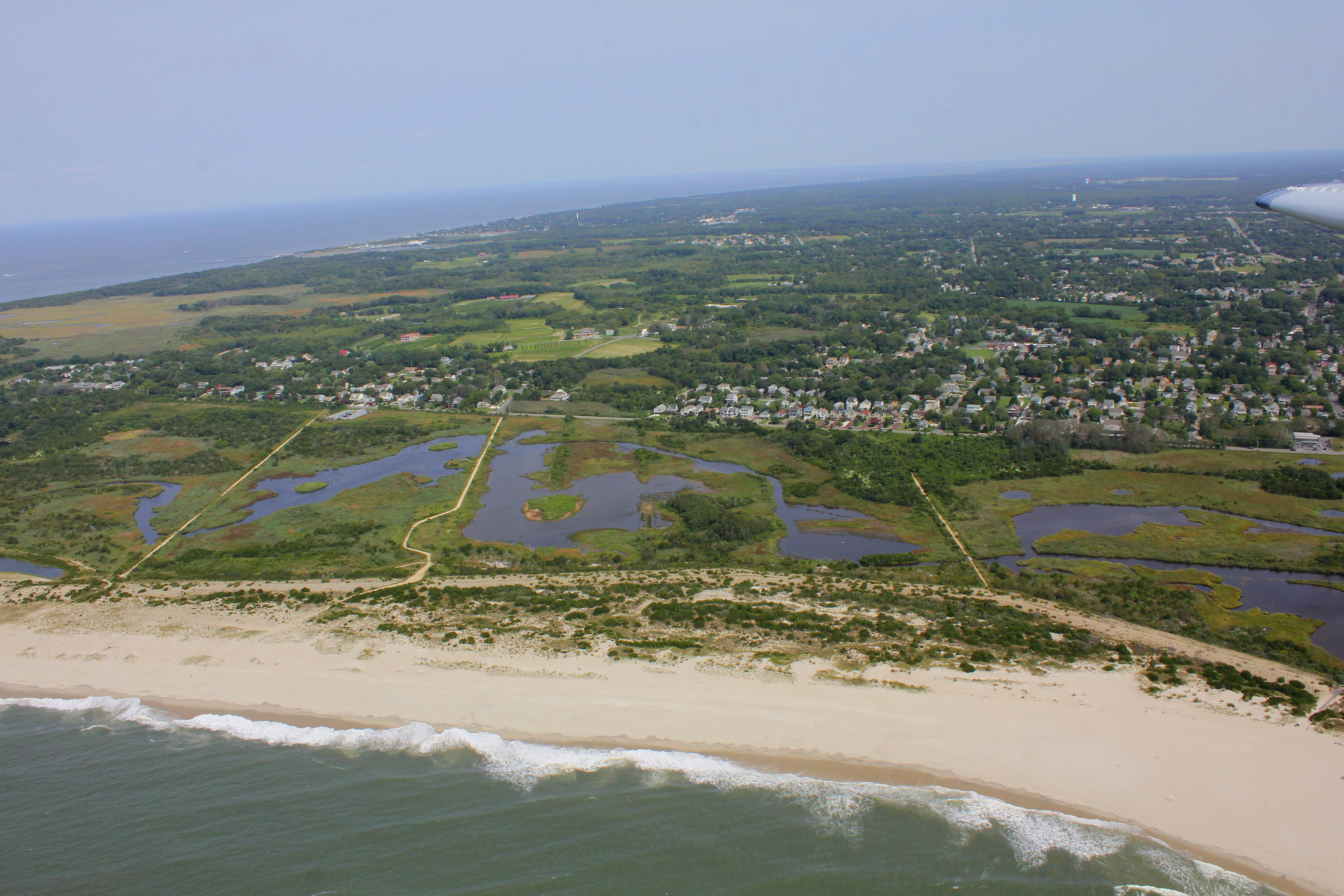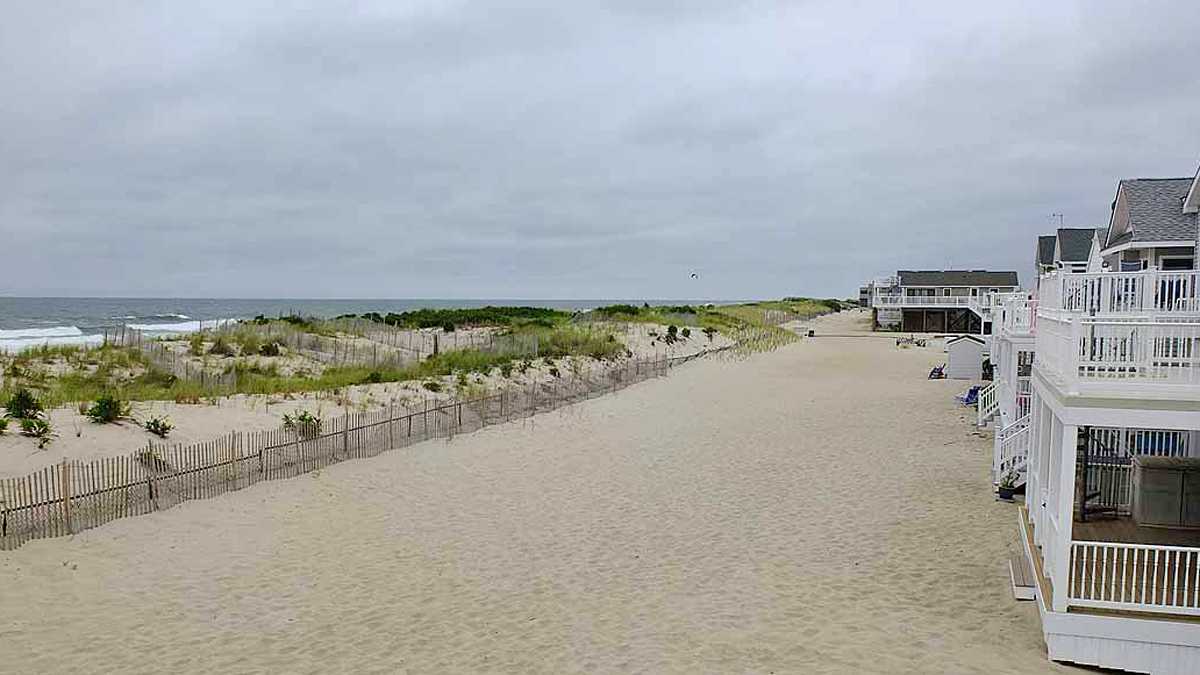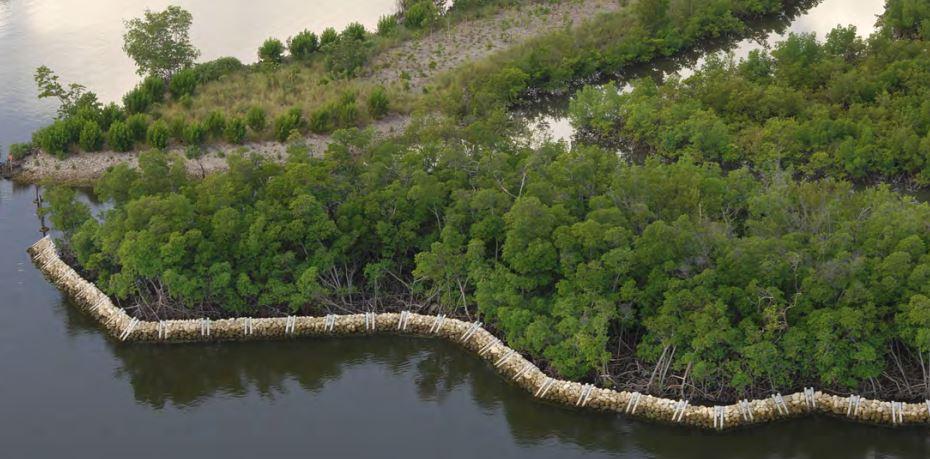Beaches and Dunes
Beaches and dunes occur in a variety of shapes, sizes, compositions, and coastal settings throughout the United States. Beaches are generally defined as stretches of sand or smaller loose particles (such as pebbles, shells, or gravel) that exist between the water and the land. Dunes are landforms that occur when there is a sufficient supply of sand or sediment and strong enough wind to promote sediment transport and, often, some type of an obstacle – vegetation being the most common – that allows the blown sand to accumulate. In many instances, healthy dune systems rely on the presence of a healthy and extensive root system from dune grasses and other vegetation to maintain their shape. Barrier islands are effectively a beach or dune system that is located offshore from the mainland.
Beaches and dunes are naturally dynamic environments and will fluctuate in size and shape year to year based on the effect of wind, waves, tides, and storm events. These processes are essential to the ongoing maintenance of the natural system and, if interrupted or suspended, can have great negative impacts on the size and shape of the coastline and the ability of the system to provide flooding and erosion control benefits.
Hazard Mitigation
A beach’s size, width, slope, shape, and sand volume help determine how well the beach can protect a developed area during a storm. Beaches are capable of reducing impacts from coastal storms by acting like a buffer along the coastal edge and absorbing and dissipating the energy of breaking waves, either seaward or on the beach itself. Dunes serve as more of a barrier between the waters edge and inland areas, taking the brunt of larger storm surges. The wider a beach or dune system is, and the more space between the sea and any developed or populated areas, the more effective and efficient the system will be at reducing the impacts of coastal hazards.
The natural protection provided by beaches and dunes requires much more space than more traditional built infrastructure (e.g. seawalls) and may be relatively minimal in heavily developed areas with narrow beaches. Barrier islands can reduce the impacts of some storm surges on the mainland, however their effectiveness will be limited based on their proximity to the mainland, with areas where there are larger stretches of open water between a barrier island and the mainland receiving less benefit.
Healthy dune systems can serve as a repository for sand to naturally replenish beaches that have experienced significant erosion from coastal storms.

Threats
Coastal development is a major cause of concern for beaches and dunes. Increasing urbanization can encroach upon – and in some cases destroy – dune systems as the push to have waterfront property and the allure of a beach front vacation drives up real estate values. Not only does the process of development itself impact beaches and dunes, but once a coastal area has become sufficiently developed and the width of the beaches or dunes has become considerably more narrow, there is often a greater threat to the built infrastructure from coastal hazards as the protective capacity of the natural system is reduced as it gets narrower and less intact.
Often when coastal properties are threatened from flooding or erosion the response is to employ more traditional approaches that are designed to trap sand or sediment in place. While these approaches may reduce impacts in one area, because beaches and dunes rely on the free flow of sand and sediment and the natural processes of erosion and accretion to maintain themselves, trapping sand or sediment in one area may have impacts on the size and effectiveness of a beach area elsewhere along the coast.
Finally, walking over or directly impacting the vegetation that helps create and hold the structure of a dune can have significant impacts. Once vegetation dies back and the root systems are no longer providing structure for the dune, the integrity of the dune can be compromised and wind and water driven erosion can start to wear down the dune faster than it is capable of rebuilding itself.
Co-Benefits
Studies have shown that beaches are the largest drivers of coastal tourism in the United States, with coastal states receiving nearly 85% of all tourist related dollars annually largely due to trips specifically to beaches and coastal areas. In a 2002 update of a previous report, James Houston of the United States Army Corps of Engineers estimated that beaches contributed over $250 billion to the United States economy in 1999 alone. A study of the tourism value of the beach in Huntington Beach, CA fond that it provided over $25 million in state sales tax and nearly $5 million in local sales tax and fees in 1999.
Beaches and dunes also serve important roles as habitat for a number of plants and animals. While many species live in the dunes or along the beach, it is the species that rely on these systems for only a small part of their lives that are most prominent. Sea turtles rely on natural beaches to lay their eggs. Shorebirds, such as terns or plovers, require beaches and dunes to nest and lay eggs. And migratory birds that move along the coast use beaches as stopping off points, massing in large numbers on an annual basis and providing some of the draw for the birdwatching industry, a more than $40 billion annual contributor to the national economy.
Additional Resources
Palm Beach County, Florida has compiled a concise set of basic guidance on maintaining beaches and dunes.
Nearly all coastal states and many federal agencies provide guidance on beach and dune management and it is recommended that pursuing locally relevant guidance serves as a first step in any search for more information on beach and dune protection and maintenance.
